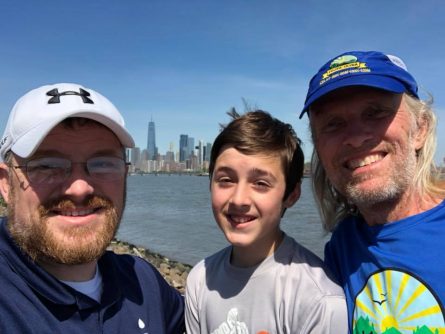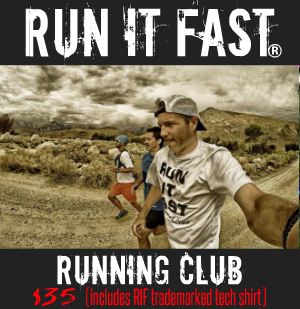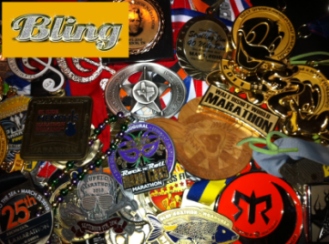Lessons Learned from my 48 Hour ‘Failure’ at 3 Days at the Fair
I didn’t want to post about my race at 3 Days at the Fair this past weekend, but I figure that if I post about my good races I really should post about my bad races as well. One of the reasons to post about bad races is to encourage others not to make the same mistakes. However, even as I hope others will learn from my mistakes, they probably won’t. Why can I say this? Because I certainly have read many posts warning me about the mistakes I made and I obviously didn’t listen! Perhaps you need to have a clear failure to cement the lessons deep into your neural processing. I can only hope that this failure was bad enough that I won’t make these same mistakes again. I repeat, I can only hope!
3 Days at the Fair is held on a certified one mile loop in Augusta NJ. The race has many different events – 10 day, 6 day, 3 day, 2 day, etc.. I signed up for the 2 day – 48 hour – event. I felt very confident about my ability for this race since I had run 150 miles in 31:30 in March and felt reasonably good at the end. Between March and this race I had put in a short marathon training block and run a PR of 3:13:58 at the St. Jude Nashville marathon just 3 weeks prior to the start of my 48 hour race. I tapered well coming into this race and felt good several days out. Nothing but good things to say about the location of this race and the way it was run.
First the good things about my race:
The best part was definitely the people. First, my son, Shawn Troxel, and grandson were able to come out as crew. This was so fun! And when my race ended early, we made the best of it and enjoyed a trip into NYC. Memories! I was also able to meet the great Gina Slaby. Well, I didn’t actually meet her, but I did say “Good job!” as she passed me several times an hour. I was able to meet and chat with Amy Mower – who won the 48 hour race – and Benjamin Timoner. I also met David Christy and Jimmie Barnes. I was able to run with Jeff Hagen, who holds several American AG records, and Steve Tomajko, who has run for the Canadian 24 hour team. The ultra running community is simply incredible!
As far as the actual race, I believe my preparation was good, except for the one big mistake listed below. My training was good; my sleep was good; and my taper coming in was good. I was well prepared. I also think I did a good job with nutrition. So far, it seems I have this somewhat figured out. Things may certainly change as I run longer times or have to push harder, but my body seems to respond well on mainly liquid calories, about 125 per hour, and then a supplement of other stuff like coke, chips, and sweets. This requires a little monitoring of the “other” stuff but it seems to be manageable.
Now for the mistakes:
The first mistake has been several years in the making. I train hard. I run lots of miles and am learning about the different energy systems and what paces are needed to train each system. However, I have never been good at stretching or strengthening my core. This has never really been a problem, other than the embarrassment at not being able to come close to touching my toes, but when combined with my second mistake I was almost unable to even start the race.
My second mistake was deciding to drive 16 hours to the race. I don’t think I will drive that far to a race again unless I travel with someone else who can do the driving while I lie down or recline. The race started on Friday morning so I left home early Wednesday and drove 11 hours before stopping and sleeping in the back of my van. When I got up in the morning I could barely walk. My back was so messed up that I couldn’t even think about running. I drove the rest of the way, checked into a hotel and spent the rest of Thursday working on my back with stretching, heat, and ibuprofen. I was able to make it to the start line but I truly hope I have learned this lesson. As we ask more and more of our bodies, and especially as we get older, the extra things like core and stretching (and other things like diet and strength) become more and more important. I am now absolutely committed to making core and stretching a prioritized and integral part of my training! Note: I am an anti-NSAID runner, but I took several doses before and during the race.
My third mistake was with hydration and actually probably began on Wednesday. I’ve never been good with drinking while traveling and tend to focus on an early coffee and maybe a Monster to keep me awake. I have a little bit of old man prostate issues which can sometimes lead to bathroom emergencies, so my traveling solution is to not drink. Not smart when you have a race coming up. On Thursday I was so focused on my back that I only had a cup of coffee in the morning. On race morning I, again, only had a cup of coffee with breakfast.
As the race got started, I drank my calories but this was only 8 ounces per hour. The temperatures were mild and there were no triggers to tell me I needed to drink. After 8 hours I hadn’t peed so I went into the bathroom at the first indication that I might have to go. What came out was about a tablespoon of very dark liquid. On the way out of the bathroom, I momentarily blacked out and had to stand still while I figured out where I was. After running another mile, both calves cramped and caused me to fall into a pile of mulch, which was quite fortunate. Several other runners quickly came to my aid and helped me back on my feet after I screamed and pounded the ground for a few minutes.
I started drinking extra water but I was 11 hours in before using the bathroom again. What did I learn? I obviously started the race dehydrated. There is no excuse for this! You need to come into a race fully hydrated. ‘nuff said! Then, once the race started, I was so focused on how I was feeling, with concern about my back, and my pacing, that I didn’t give hydration the thought it required. Yes, I know we should be concerned about drinking too much, but I certainly did not drink enough. What will I do differently? I will make sure to start the race hydrated. I will also go extra slow for the first hour, which leads into my final mistake, and drink a little extra to make sure I have a good bathroom break sometime in the first couple hours.
My last mistake, at least the last I can think of, is pacing. For this, I owe a big apology to Bob Hearn. It’s a little presumptuous of me to call Bob my mentor, but I have learned so much from his race reports on The Puzzle of Running and consider myself a disciple of his system. It was as if I just did a data dump on what I had supposedly learned. This is quite frustrating. I felt good starting the race and was glad that my back was allowing me to run. I decided to just run my regular easy pace for the first hour. The problem is that an easy pace is completely unsustainable for an ultra distance event – unless you are one of the top runners in the world. My thinking was that my goal pace, which is several minutes per mile slower than my easy pace and requires walk breaks, is kind of difficult when you are feeling good and rested, so why not build a little “tired” into the legs to make the goal pace more reasonable. Stupid, stupid, stupid! All this does is expend unnecessary energy. After the first hour I was 14 minutes ahead of schedule and I fell into thinking this was good as it allowed me to go slower than goal pace for a bunch of miles and stay on goal.
After the first hour, I tried to slow down and take walk breaks but my pace was still too fast for the next hour…and the next. At one point I was 47 minutes ahead of schedule. My goal pace put me at a very aggressive mileage for the full 48 hours. When you set a goal like this, you ought to be terrified – TERRIFIED! – if you find yourself ahead of your goal early into the race. What did I learn and what will I do differently? For a relatively flat course, I need to have a much more detailed plan of how much I am going to run and how much I am going to walk, from the very first lap. I also need to plan my running pace and my walking pace in order to meet my goal pace. Then I need to race by a Thou Shalt Not go faster than goal pace for any mile, or at least as averaged over every few miles. I also think I will go slower than goal pace for the first hour to let my system relax before settling into a rhythm.
I decided to end my race at 91 miles at 18:13:16. I have zero regrets about stopping when I did. It was the right thing to do! My anterior tibialis had been hurting for the last few hours. I’m sure this was due to a combination of dehydration and poor pacing, especially with trying to go too fast while walking. You need to train your walk, and you should train to walk fast, but once in a race I think you should pull back from your fastest walking speed. There may have also been a problem with wearing the ankle strap with the timing chip. I might see if there is an option to wear or carry this another way in the future. When the anterior tibialis becomes inflamed it is difficult to push off while walking. For the last hours it hurt more to walk than it did to run. I had a prior injury to this tendon and know that if damage occurs, the recovery can be very long. I am now several days post race and my anterior tibialis has no lingering pain. After the race, my back quickly tightened up and it will take several more days before I can think about running, but I’m content with stopping and with the lessons learned.
I’m looking forward to getting back to training and am really looking forward to my next race. I am registered for the 48 hour race in the Dome in August and may try to sneak in a race in GA in July.
Thanks for reading!
Steve Troxel
RIF Member
[photos: David Christy, Steve Troxel]






